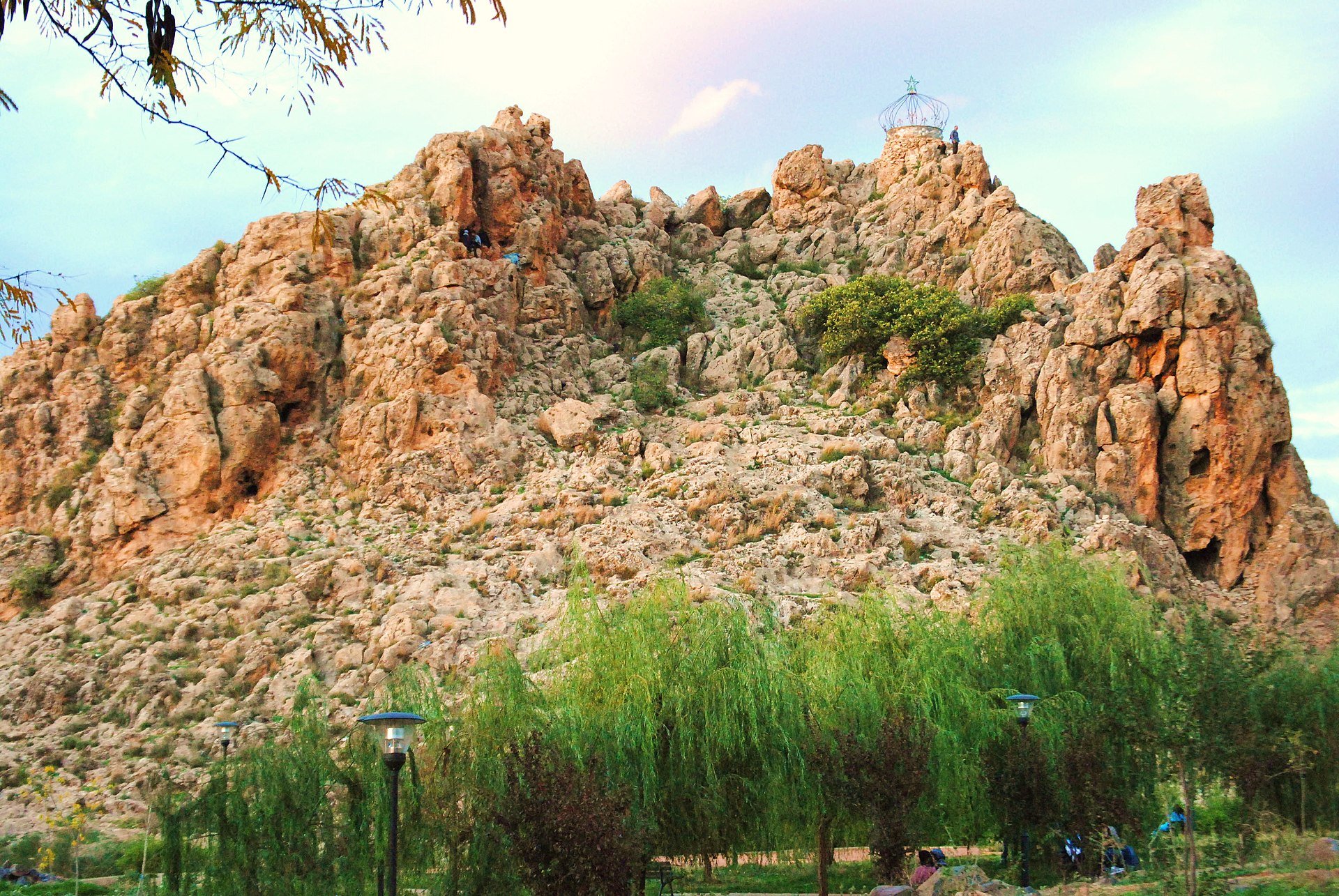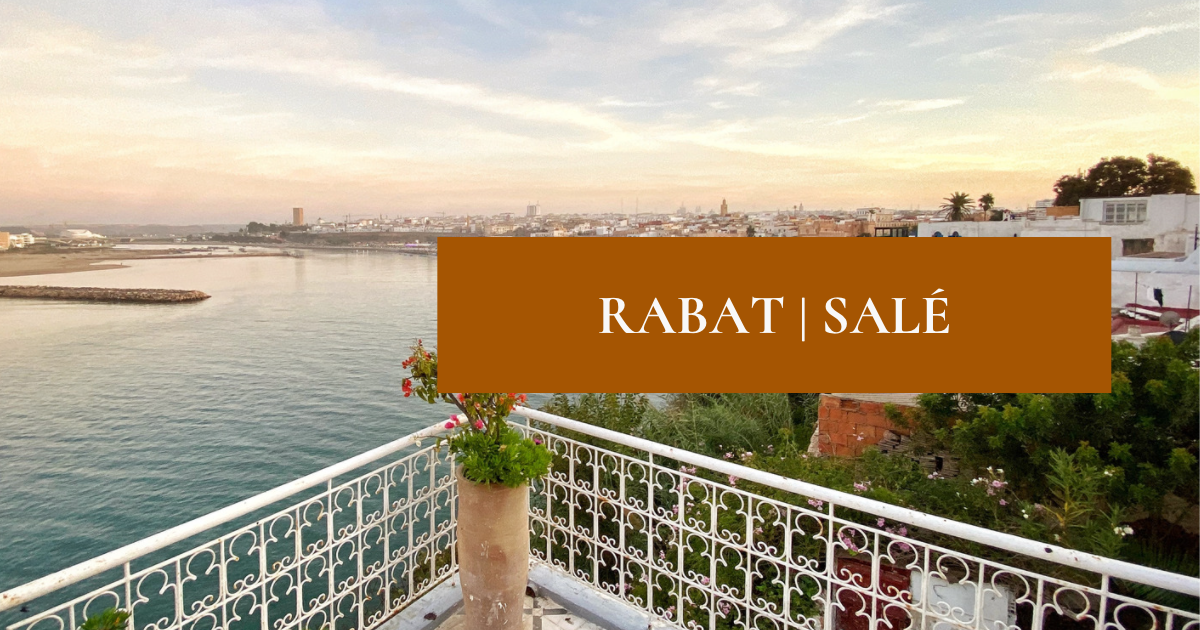Azrou City Primer
The small city of Azrou is the Capital of Amazigh Culture. With a population of around 80,000 people, this city tucked into the Northern end of the Atlas Mountains is a peaceful escape from the larger cities of Fes and Meknes. Azrou is known for its distinctive rock located in the middle of town (from which it gets its name, because Azrou means “rock” in Berber), and for the Cèdre Gouraud Forest, home to a nearly 800-year-old cedar tree and to the Barbary macaque monkey. The town itself is unique in Morocco because it is built in the European style with red-tiled roofs that allow the buildings to withstand large amounts of snow in the winter. Azrou is at an altitude of 1250 meters (4100 feet) and surrounded by mountains covered by green trees. The region is also known for its butterflies, cherry trees, apple trees, fish farms, sheep farming, and the abandoned sanatorium near Ben Smime.
Historically, Azrou is home to the first high school in the Berber Region and one of the oldest high schools in Morocco, which is called the Tarik Ibn Ziad School (Lycée or Tanawiya Tariq Ibn Ziyad in French and Arabic). This school, built by the French colonial authorities in order to train Moroccans in administration, is named after the Amazigh (Berber) general who was the first to go to the Andalous region.
Get There
Azrou is easiest to get to by car or large taxi. The city is located at the crossroads of the N13 and N8 roads, which connect Meknes and Midelt, and Fes, Khenifra, and Marrakech, respectively. The closest airport is Fes-Saiss (airport code FEZ), which is located about 1.5 hours away. The closest train stations are located in Meknes, as well as in Fes. From Fes the easiest way to get to Azrou is by grand taxi; go to the CTM station in Fes where you will find a number of white taxis parked. Just ask for Azrou and they will point you to the correct taxi. The cost is around 38dh per person or 220dh for the whole taxi. After about an hour and a half ride into the mountains, you will pass through a few cities (including Ifrane), before being dropped off in the center of Azrou.
Get Moving
Azrou is surrounded by cedar forests. If you have a vehicle, you can drive out above Azrou to find marked trails, or you can stop anywhere along the road and hike into the forest and quickly find yourself surrounded by beauty. Without a car, you can stay close to the city, which is surrounded by hills with trails you can hike for views overlooking the whole city and valley.
Get Touristy
Azrou is probably not a typical tourist destination but is an excellent place to get a peek inside traditional Amazigh (Berber) culture. Explore the city center to see the open square full of little shops. At the center of town, if you look up you will see a big crown sitting on a rock (pictured above). Enjoy the park in the surrounding area or make a small hike to the top of the rock and get a good view of the city.
Off the beaten path, you will find the Monastery Toumliline, which operated as a Benedictine monastery in Azrou from 1952 to 1968. In addition to the monastery and chapel, the grounds also housed a school for boys who were children of the colonialists, an orphanage and boarding school, a hostel, conference facilities, orchards, an apiary, and space for the breeding of livestock. The site is now closed, but with its interesting architecture, history, and location, Toumliline is still worth a visit. The movie Of Gods and Men was also filmed there, so you will recognize the settings of the scenes from the movie.
Get Shopping
There are several co-ops on the outskirts of town where you can buy homemade couscous and natural oils and herbs. There is also a rug shop as you descend into Azrou on the N8 with rugs made in the area. In addition, you will find some pottery shops where there will be some good finds. A benefit of Azrou being off the beaten path is that products are normally cheaper than in the bustling tourist areas.
Get Lunch
While you are spending the day hiking or shopping in Azrou, you can stop for a traditional lunch of tajine or trout at one of the multiple restaurants in the city center in front of the mosque. For a nice café with a varied menu (from pizza, to brochette, to burgers) check out Le Rocher on the edge of town.
Get Dinner
Tourtite is an auberge and restaurant between Azrou and Ifrane that is the place to eat if you want a beautiful view, or a place for kids to play.
Get Inspired
Azrou has an artisanal center, where they display (and sell) beautiful rugs, and show woodworking and traditional homemade shoes.
Do Not Miss
Azrou Market Day every Tuesday from 10 a.m. until about 3 p.m. where animals, produce, and even Berber carpets are brought in for locals and tourists alike to test their bargaining skills. From an Azrou local: “If you are here on a Tuesday, you do not want to miss the souq. It is the place where everyone goes to buy their fruits and vegetables for the week. There are crowds of people selling and buying, yelling out prices, and ready to bargain. The souq not only has fruits and vegetables, but it also includes clothes (new and second-hand), blankets, furniture, material, rugs, appliances, and things for your kitchen. You can find almost anything at the souq. If you are an early riser, you can even go in the early morning, when all the farm animals are being sold. Going to the souq is such an invigorating experience that leaves you thinking about all the different things you saw the previous hour or two.”
Special thanks to our friends in Azrou for their contributions to this article!
Thanks to Courtney at All The Best Days for the idea of how to set up these city primers.








The small city of Azrou is the Capital of Amazigh Culture. With a population of around 80,000 people, this city tucked into the Northern end of the Atlas Mountains is a peaceful escape from the larger cities of Fes and Meknes. Azrou is known for its distinctive rock located in the middle of town (from which it gets its name), and for the Cèdre Gouraud Forest, home to a nearly 800-year-old cedar tree and to the Barbary macaque monkey. The town itself is unique in Morocco because it is built in the European style with red-tiled roofs that allow the buildings to withstand large amounts of snow in the winter.